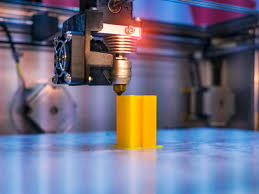
Tech by Android – How 3D printing is disrupting construction and medicine has become a hot topic in innovation circles. This technology continues to evolve and bring new possibilities to industries that once relied on traditional methods. Many experts now see 3D printing as a game changer that improves speed cost and customization at the same time.
“Read More: Regulation in Radiation Protection as low as Reasonably Achievable to Avoid Risks”
3D printing transforms the way construction projects finish much faster than before. Many companies already use large scale printers to create walls floors and even entire houses. In addition this approach cuts down waste and minimizes human error. People enjoy more affordable homes built in a fraction of the usual time.
3D printing saves lives by producing customized medical tools on demand. Many hospitals now print surgical instruments prosthetics and even parts of implants. Moreover this technology allows doctors to adapt designs for each patient quickly. Patients benefit from better outcomes thanks to these personalized solutions.
“Read About: The Evolution of Graphics in Mobile Games”
Reducing waste and conserving energy has become easier thanks to 3D printing methods. Many construction and manufacturing sites now generate fewer scraps since printers use only what is needed. Furthermore some processes use recycled materials directly in the printing feed. Companies meet sustainability goals more effectively.
Creating intricate designs once thought impossible now becomes routine with 3D printers. Many architects and engineers develop shapes and patterns that traditional tools could never achieve. Additionally the ability to experiment without major costs encourages bold creativity. Cities start to see innovative structures taking shape.
3D printing empowers local communities by offering affordable building and medical options. Many remote areas can produce housing parts or medical aids on site without depending on expensive imports. Moreover communities can train their own workers to operate and maintain printers. This builds skills while meeting local needs.
Prosthetic limbs and implants see dramatic improvements thanks to 3D printed techniques. Many patients now receive lighter more comfortable and better fitting devices. In addition the quick turnaround shortens the waiting time for critical care. Doctors and engineers collaborate to improve designs faster than ever before.
Hospitals change how they respond to emergencies by printing supplies on demand. Many disaster zones benefit from immediate access to custom splints braces or surgical models. Furthermore having printers on site helps healthcare workers adapt to unpredictable needs. Communities recover quicker with this flexibility.
3D printing makes construction projects more inclusive and accessible to more people. Many organizations use the technology to provide homes for low income families or disaster victims. Moreover the lower labor and material costs open opportunities in areas with limited resources. Families move into safe homes sooner.
This technology inspires collaborations between industries that never worked together before. Many engineers designers and medical professionals now team up to solve shared problems. Furthermore universities and startups contribute research and fresh ideas. This spirit of teamwork accelerates progress across multiple fields.